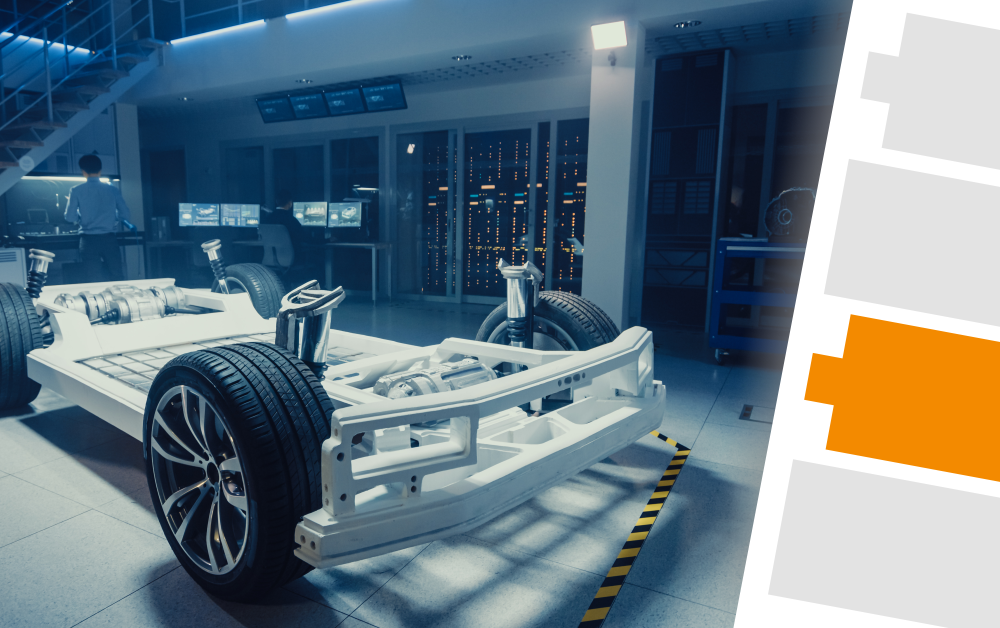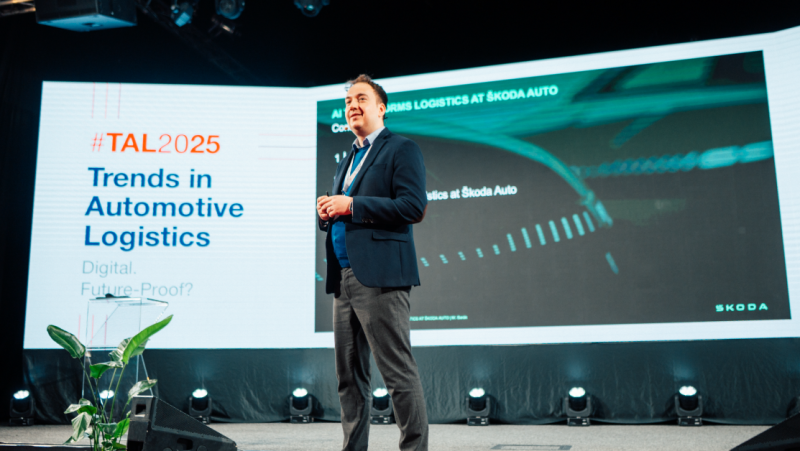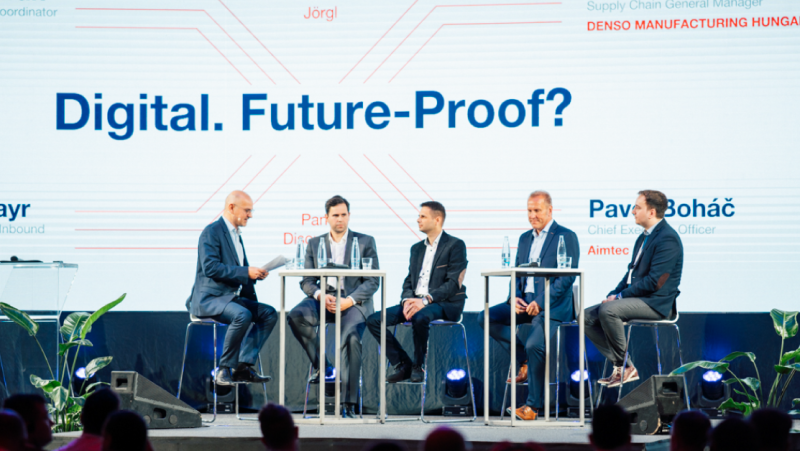The Future of Automotive Industry: Consequences of E‑Mobility
- Trends
- Article
What changes do automotive suppliers expect with the increasing trend of e-cars? And is the only change awaiting us in passenger cars the engine? We respond to this in the third part of our mini-series on electromobility and its impact on the automotive industry. The first two parts, in which we looked at the causes of the onset of electromobility and the amounts of investment in it, can be found here.
Established car makers keep the secret to the key ingredient in cars – the combustion engine – under lock and key “in house” (unlike other parts). The combustion engine, combined with smooth logistics and the car assembly process itself, is the key expertise held by original equipment manufacturers. But with the advent of electrical power systems, this expertise is gradually disappearing. Not only the profitability of OEMs, but also employment throughout the automotive industry is at risk.
The combustion engine, combined with smooth logistics and the car assembly process itself, is the key expertise held by original equipment manufacturers. But with the advent of electrical power systems, this expertise is gradually disappearing.
It is estimated that a combustion engine power system contains 1,400 parts, while an electric power system has just 200. It takes Volkswagen 26‒32 hours to manufacture a combustion engine car, but 16 hours to produce an electric car; the company aims to get this below 10 hours.
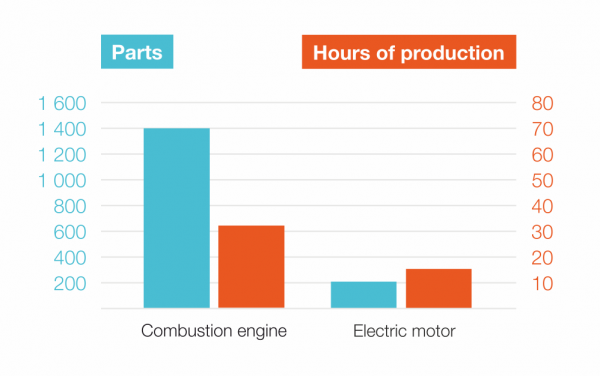
Opportunity for production automation
The reduced complexity of e-mobility provides further opportunity for production automation, leading to a reduction in jobs. The automotive powerhouse of Germany alone employs more than 800,000 people, and 1.5 million workers are connected to the industry in some way. Catastrophic scenarios indicate that up to 600,000 jobs are at risk unless the government and the largest corporations are able to respond in time to the potentially rapid transition to e-mobility, autonomous cars and the new perspective of mobility as a service.
The new era in the automotive industry does not portend only negatives. As has been the case many times throughout history, jobs will shift from one industry to another. Passengers expect that a ride in a car will also be fun and have increasingly greater demands for comfort. With the introduction of autonomous driving, more companies will need software developers and designers. Accompanying this shift will be production automation, which will make it possible to minimise human involvement in manual work and provide people with the opportunity to move on to more sophisticated activities. On the one hand jobs will naturally disappear, but on the other hand, new jobs will be created in new sectors.
Hand in hand with e-mobility goes production automation, which will make it possible to minimise human involvement in manual work and provide people with the opportunity to move on to more sophisticated activities.
Suppliers at risk
Changes also await established suppliers in the automotive industry, with those whose supplies are at all associated with combustion engine production particularly at risk. In 2018, consulting company Roland Berger analysed what impact the electrification of cars would have on individual car parts and found that particularly the following car parts would become unnecessary:
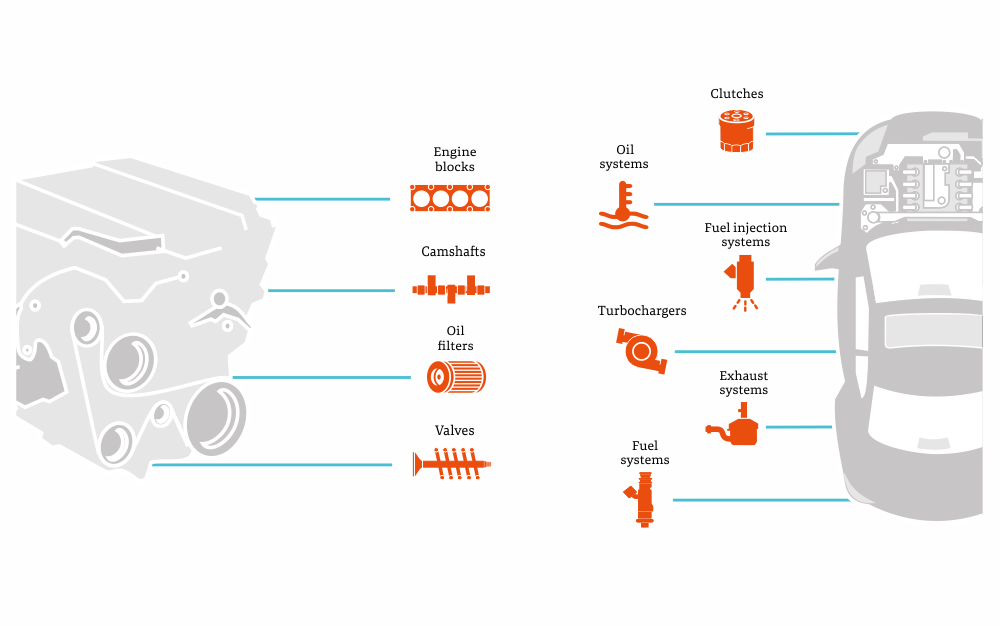
Major changes and modifications will also come to other parts, including transmissions, suspension and shock absorbers, and air conditioning systems. Car body designs will be sought – the lighter the vehicle, the greater range per single charge. The changes will also affect electronics and special sensors and detectors. Electrification will also represent an opportunity for entirely new parts to be used – electric motors, batteries and battery management systems, battery casings, fuel cells and hydrogen tanks.
Given changing views concerning mobility (car sharing, autonomous driving, electric power systems and digitisation), Roland Berger believes that suppliers must prepare for several important changes that threaten their business in the sector up to now. These threats are:
- Stagnating sales of conventional parts on key markets;
- Accelerating changes to technology (electric power systems, advanced driver-assistance systems, vehicle connectivity);
- The increasing importance of software (new area of growth).
In addition to technology changes associated with electrification or car sharing, OEMs will also face an increasing need to invest in new technologies. At the same time, they will experience pressure on their margins due to new competitors – from China and/or from technology companies. Analysts at Atradius, an insurance company, believe that further developments will largely depend on China.
China can change the market
With 23 million car sales in 2018, China is by far the largest car market in the world. The introduction of mandatory quotas for electric cars could have a major impact on the sales of cars with conventional power systems. Such a decision would affect the investment strategies taken by OEMs – and affect which parts will be in greater demand and which will experience a decrease in demand. Suppliers must be financially prepared to be able to change the focus of their production if needed based on demand. Moreover, the barriers to entering the electric car market are not very high right now, and many new competitors to suppliers and, indirectly, to car makers themselves are entering the market.
According to the analysts at Atradius, the possible impact of the United States imposing further import tariffs is low. As most suppliers took the lead of car manufacturers and produce necessary parts directly in the United States, they will not be affected by any trade restrictions and in this case the risk of non-payment will not rise significantly.
Autonomous driving, 5G and Mobility as a Service
Besides alternative fuels, there has been increasing talk about autonomous driving. Its development is closely associated with the construction of the 5G network, necessary legislation, and precision mapping; however, over the next ten years, it is expected to have only a slow, gradual impact on mobility.
As millennials come of age, established user preferences are slowly changing and people are increasingly less inclined to own their own car. Young people want to use car-sharing or prefer using new transportation providers like Uber (ride-hailing). As a result, the argument can be made that views of mobility are changing from private mobility to mobility as a service (MaaS), which combines several types of passenger transportation. The consulting company PWC estimates that the MaaS market in the European Union will increase from today’s US$25 billion to US$451 billion in 2030.
According to Morgan Stanley, the car will become a “smartphone on wheels”. Today software comprises 10% of the value of cars and hardware the remaining 90%. In the foreseeable future, these figures will even out to 40% each, with the remaining 20% comprising content for the car users.
Share article
Top stories from logistics, production and IT.
Subscribe to Aimtec Insights
By registering, you agree to the processing of your personal data by Aimtec as described in the Privacy policy.
Get top stories and articles
from Logistics, Production and IT.
Subscribe to Aimtec Insights
By registering, you agree to the processing of your personal data by Aimtec as described in the Privacy policy.

